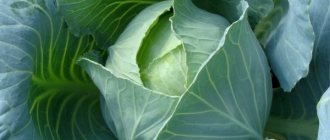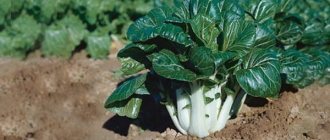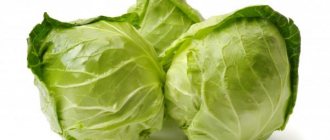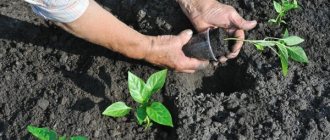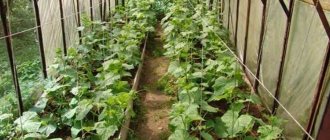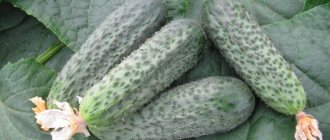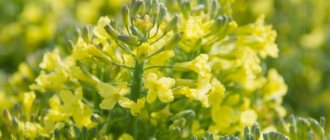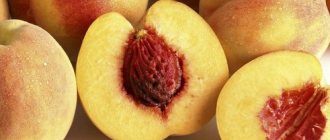Photo
In the photos below you can see what it is - Chinese or Chinese cabbage, and what the vegetable looks like.
Benefits and harms
The benefits of Chinese cabbage have been known since ancient times in the East , and modern research confirms it.
- Chinese cabbage is rich in fiber, so it can effectively cleanse the gastrointestinal tract and eliminate constipation.
- It creates a feeling of fullness, filling the stomach, so you can safely eat it at night if you don’t want to fall asleep with a feeling of hunger: you won’t add extra pounds.
- For the same reason, it is useful to introduce it into the diet for metabolic disorders and obesity: while the stomach digests a juicy vegetable with a minimum calorie content, the body has to burn accumulated fats. As a pleasant addition, the skin will be cleansed.
- For gout, cabbage binds and removes uric acid salts from the joints. It also relieves swelling and pressure surges.
- Peking is also recommended for diabetics, as it can lower blood sugar.
- Elderly people with Alzheimer's disease are recommended to consume Chinese cabbage daily in small quantities to saturate the body with the necessary substances that counteract the development of the disease.
- For diseases of the nervous system, Chinese cabbage plays the role of a natural tranquilizer without side effects.
- For those who suffer from frequent headaches, Chinese cabbage is recommended regularly.
- The vegetable supports liver function, so it is recommended to use it for both acute and chronic hepatitis.
- Potassium in cabbage supports the functioning of the cardiovascular system, and lysine rids blood vessels of bad cholesterol.
- In winter, salads with Chinese cabbage will strengthen the immune system and enrich the body with vitamin C.
- By eating Chinese cabbage, you can get rid of anemia and chronic fatigue.
- Antioxidants in Chinese cabbage protect the body from the development of malignant tumors, especially breast cancer.
Reference. The ban on eating Chinese cabbage may be due to the abundance of ascorbic acid in it. Also, you should not eat it the day before surgery, even if we are talking about a visit to the dentist.
Read more about the benefits and harms of Chinese cabbage separately.
Vegetables in the diet of children and nursing mothers
In the first months of the child’s life, it is advisable for the mother to eat boiled and stewed Chinese cabbage without seasonings and spices. Then, if there are no adverse reactions in the baby, you can add fresh, but in small quantities. In most cases, the vegetable is digested normally , and a young mother can eat it without any fear within six months after giving birth. You will find all the details on this topic in another material.
Can it be given to animals?
Dogs enjoy eating this vegetable fresh, boiled and stewed; it is usually well digested. You can also safely give it to farm animals. Owners of turtles and rodents can also treat their pets to a crunchy cabbage leaf. Fresh Chinese cabbage is also beneficial for Achatina snails.
In all cases, it is strictly forbidden to give vegetables in salted form, much less pickled. We wrote about Chinese cabbage in the diet of animals here.
Comparison with other types of vegetables
Different types of cabbage have their own advantages. Cabbage called Beijing (Chinese) can be used as lettuce , which cannot be said about other types of vegetables. Compared to other types of cabbage, it is more tender. At the same time, it has a longer shelf life and retains vitamin C in its original state for much longer. Read more about how it differs from other varieties here.
Varieties
In general, this crop is quite early ripening, early varieties ripen in 40-55 days, medium varieties - 55-60, late varieties - up to 80 days. Dutch varieties are considered the best, and in order to harvest from spring to autumn, you can plant several different varieties.
- Early varieties - Khibinskaya, Orange Mandarin, Cha-Cha.
- Mid-season - Glass, Magician, Pomegranate, Nika.
- Zoned - Lastochka, Lebedushka, Alyonushka, Vesnyanka, Pava (Russian selection).
- Hybrid varieties - Little Miracle, Manoko, Tenderness, Bilko, Vorozheya, Hydra, Knyazha.
What is Chinese cabbage?
Chinese cabbage (Brassica rapa pekinensis) or petsai (English pe-tsai) is a biennial plant. In culture it is grown as an annual vegetable. During the season it is possible to obtain three harvests. This vegetable plant appeared on the Russian market not so long ago - 7-8 years ago. At first, “Beijing” was exotic for Russians, but today it is a popular food product that is in stable demand regardless of the season.
Chinese cabbage is an important culinary product. It has a valuable nutritional composition, soft structure and juiciness, and goes well with meat, fish, and vegetables. “Pekingka” is included in a variety of dishes - salads, soups, cabbage rolls, etc.
Cabbage ripens in the fall, but when grown in a greenhouse it grows year-round. In the warm season, when greenhouse farms do not spend money on heating and competitors appear in the form of seasonal vegetables, the price of Chinese cabbage falls.
Features of cultivation
There are specifics when growing Chinese cabbage.
On a note. Chinese cabbage is a short-day crop, and it is important not to be late with sowing to avoid bolting. If you miss this moment from the very beginning, there will be no harvest.
Vegetables are planted in one of two ways:
Sowing in the ground in mid-spring and using mini-greenhouses.- The sunniest and warmest area is selected.
- The soil is loosened.
- The holes are being prepared.
- Pour humus into each handful, then 1-2 seeds.
- Sprinkle with 1 cm of soil and water.
- When the shoots appear, the most developed of them are left, the rest are pinched.
- Through seedlings in early spring by transfer (or in peat cups). The seeds do not need to be soaked before planting. Shoots will appear even at a temperature of +4-5°C; just keep the seedlings on the window and water them. Plants are ready for planting in the ground when five leaves appear on them. Watering is stopped for 2-3 days so that the earthen ball dries out and the roots are not damaged during transshipment.
From the video you will learn how to sow Chinese cabbage:
How to Preserve Chinese Cabbage for the Winter
The vegetable is best eaten immediately raw, stewed or boiled. If long-term storage is required, proceed as follows:
- Cabbage harvested in August is rinsed to remove dirt.
- Dry and pack in cling film.
- Store in the refrigerator for 2 weeks.
The autumn harvest can be stored longer - up to 3-4 months. For this:
- Select undamaged sockets.
- Wrap in cling film.
- Placed in wooden or plastic boxes.
- Store in a cool, well-ventilated area at a temperature of +1...+3°C and air humidity of 80-90%.
For longer storage, the vegetable can be frozen or dried, as well as pickled or pickled.
Care
The soil
The soil for this vegetable should be light, fertile, fairly loose and moisture-permeable , the ideal option is loam. If the soil on the existing site is not such, you can prepare it by adding humus or rotted compost to increase nutritional value and non-acidic dry peat, which will improve drainage characteristics.
The holes should be located at a distance of 25-30 cm from each other; to save space, you can place them in a checkerboard pattern.
Reference. To grow seedlings, it is better to use humus with coconut substrate in a ratio of 1:2 or turf with peat in equal quantities. When sowing Chinese cabbage seeds in open ground, add 0.5 liters of humus to each hole.
When planting seedlings, you need to carefully dig up the area. The beds should be narrow, with small trenches between them.
Watering
When watering Chinese cabbage, you need to ensure that an earthen crust does not form around the seedlings. In this case, either very careful loosening of the soil will help, which is very labor-intensive for the gardener and unsafe for the roots, or more effective and simple mulching, which is used much more often. You need to water the plant at the root, so that water does not get on the leaves and cause sunburn. The water should be warm.
Lighting
This is an extremely important issue for the successful cultivation of Pekinka, since daylight hours should not exceed 12 hours. But, starting from the spring equinox, the length of the day increases rapidly. At the same time, the plant loves the sun very much and does not grow well in the shade, so you will have to make sure that there is exactly as much sun as necessary. For this purpose, its quantity is regulated by covering the beds from evening to morning with an opaque film.
Temperature
The optimal temperature for growing Pekinka is 13-20°C. At a lower temperature, it will not be able to grow; at a higher temperature, a head of cabbage will not form. To avoid the harmful effects of possible frosts, the seedlings are covered with canvas immediately after planting.
Fertilizer
Fertilizers are usually not required for Chinese cabbage; it is especially recommended to avoid nitrogenous ones. Only during the period of head formation can you use liquid organic fertilizers: a solution of humates, fermented herbal infusion or mullein in small quantities.
If the site allows, you can plant seedlings or seeds at intervals of 2 weeks, so the harvest can be harvested throughout the summer season. Summer planting can be done at the end of August.
Diseases and pests
Beijing's main enemies:
flies;
- scoops;
- slugs and cruciferous midges.
The fight against them should begin at the stage of preparing the site for planting:
- do not plant Chinese cabbage in beds where mustard, radish and other cabbage previously grew;
- sprinkle the bed with wood ash;
- cover the plantings with non-woven fabric;
- spray the seedlings with a mixture of mustard powder, tobacco, ash and red pepper.
Pests can be repelled by planting next to cabbage:
- sage;
- sagebrush;
- garlic;
- petunias;
- potatoes;
- Place burdock leaves between the beds.
Reference. If the measures taken are not enough, chemicals are used.
Diseases:
- Fungal infections (downy mildew, gray rot) affect cabbage that is over-watered at high temperatures. Watering should be reduced and the plantings should be treated with special products.
- Clubroot of cabbage plants develops on stems and roots. Plants become distorted and swellings appear. Diseased plants must be removed in a timely manner, and if it is possible to save the harvest, then for 3 years it is necessary to refrain from growing cabbage in unfavorable beds.
- Blackleg is the scourge of mainly young plants. The development of infection can be prevented by disinfecting the soil and following the rules for caring for seedlings.
Use in cooking
This vegetable is good for preparing first courses, a side dish for second courses and, of course, for fresh salads. It is also salted and pickled. You will find many recipes for preparing Chinese cabbage in this material, and in order for these dishes to turn out tasty, we will advise you in a separate article on how to choose it correctly.
Botanical description
The leaves are juicy and tender, collected in a head or rosette. Color – green or light yellow, depending on the variety. Each leaf has a midrib and the edges are wavy or jagged. The underside of the leaves is pimply. Cylindrical heads of cabbage have oblong-shaped leaves. In cross section, the heads of cabbage are yellowish-green, whitish-green, yellowish-white - the color varies.
The main feature and difference between Peking cabbage and other types of cabbage is the absence of a stalk.
Contraindications
This vegetable is, without a doubt, a real storehouse of nutrients. But there are diseases for which it is contraindicated:
gastritis - with high acidity in raw form (about use for gastritis - here);
- stomach ulcer;
- pancreatitis (read about the use of this vegetable for pancreatitis);
- increased acidity;
- gastrointestinal bleeding.
Fiber and vitamin C, which are contained in large quantities in vegetables, can irritate diseased organs and aggravate the course of the disease.
Mid-season varieties
Unlike early-ripening species, varieties belonging to this category form larger and denser heads of cabbage, which are suitable not only for preparing salads, but also for making pickles.
Roller coaster F1
Heads of cabbage with a dense structure weigh 2.5 kg. The main advantages are resistance to cracking and long shelf life. The fruits are used for processing.
Bilko F1
A hybrid whose growing season lasts from 60 to 65 days. The shape of the head of cabbage is barrel-shaped, the leaf blades are bubbly and not pubescent. The weight of the fetus under the worst conditions is 1.2 kg, under the best – 1.8 kg.
Thanks to their dense structure, the heads of cabbage can be stored for six months. The variety is endowed with good immunity to clubroot and powdery mildew.
Brockken F1
A variety that breeders have endowed with resistance to flowering. Heads of cabbage with a dense structure can be stored for a long time.
Pomegranate
High-yielding variety. Heads of cabbage, which are similar to a cylinder, contain a lot of useful substances. The color of the leaves is dark green.
With good care, the fruits grow up to 2.5 kg. The main advantage over other mid-season varieties is resistance to the death of leaf blades.
